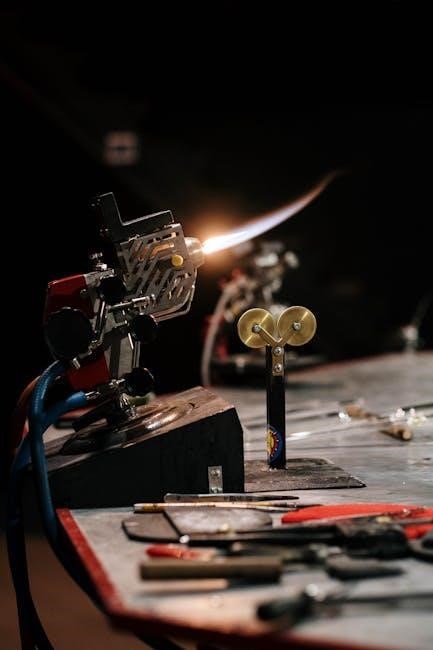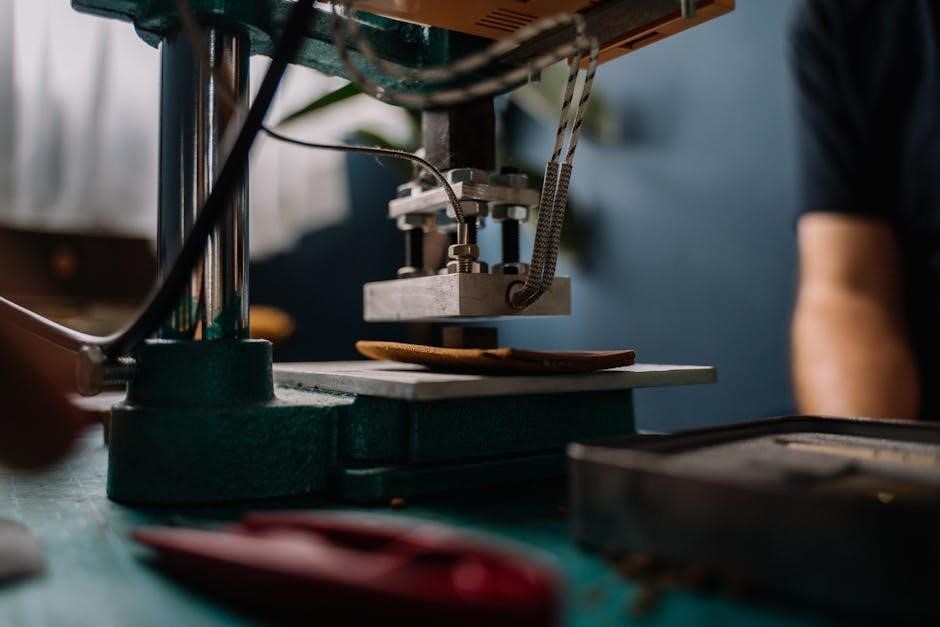Breathing techniques for labor are non-pharmacological methods endorsed by the WHO to manage pain and enhance well-being. They involve deep, rhythmic breathing to help women stay calm and focused during contractions, promoting relaxation and reducing stress.
Importance of Breathing During Labor
Controlled breathing during labor is essential for managing pain and reducing stress. It helps women stay focused and calm, enabling them to cope with contractions more effectively. Breathing techniques are a natural, non-invasive way to alleviate discomfort and promote relaxation. By improving oxygen supply to the uterus and baby, these methods enhance maternal and fetal well-being. Proper breathing also reduces muscle tension, making contractions more manageable and empowering women to navigate the labor process with greater confidence and control.

Overview of Popular Breathing Techniques
Popular breathing techniques include Relaxed Breathing, Lamaze, and Light Breathing. Relaxed Breathing focuses on slow, deep breaths to maintain calm. Lamaze involves conscious, rhythmic breathing to reduce pain and stress. Light Breathing uses shallow breaths to manage intense contractions. These methods help women stay focused, reduce tension, and improve oxygen flow, offering tailored strategies for different labor stages and personal preferences. They empower mothers to navigate labor with confidence and comfort.

Science Behind Breathing Techniques
Breathing techniques influence brain chemistry, reducing pain perception and stress hormones. Deep, rhythmic breathing enhances oxygen supply and promotes relaxation, aiding labor progression and emotional stability.
How Breathing Affects Pain Perception
Breathing techniques significantly impact pain perception by altering brain chemistry. Deep, rhythmic breathing triggers the release of endorphins, the body’s natural pain relievers, reducing discomfort. This method also shifts focus away from pain, promoting mental relaxation. Shallow breathing, such as light breathing, can help during intense contractions by providing a sense of control and reducing anxiety. By managing breath, women can better cope with labor pain and maintain emotional stability.
The Role of Relaxation in Labor Progression
Relaxation plays a crucial role in labor progression by reducing stress hormones and promoting uterine efficiency. When the body relaxes, oxytocin levels rise, enhancing contraction effectiveness. Breathing techniques, such as slow, deep breathing, help maintain calm, allowing the uterus to work more efficiently. Relaxation also reduces muscle tension, enabling the pelvic floor to relax and facilitate the baby’s movement through the birth canal, making labor more manageable and progression smoother.

Relaxed Breathing (Slow Paced Breathing)
Relaxed breathing involves slow, deep breaths to promote relaxation and focus during labor. It begins with a deep cleansing breath, fostering calm and reducing tension effectively.
Technique Description and Benefits
Relaxed Breathing, or Slow Paced Breathing, is a foundational technique involving deep, rhythmic breaths. It starts with a cleansing breath, followed by slow inhalation and exhalation. This method helps reduce tension, promotes relaxation, and improves oxygen flow to both mother and baby. By focusing on breath, women can manage pain and stay calm, making it easier to navigate labor’s physical demands.

Practical Exercises for Practice
Start with deep cleansing breaths: inhale deeply through your nose, hold briefly, then exhale slowly through your mouth. Practice slow, rhythmic breathing by inhaling for a count of four and exhaling for six. Use birthing balls for support while rocking your pelvis. Try arm movements: raise arms while inhaling and lower while exhaling. Regular practice in various positions (standing, sitting, kneeling) enhances breath awareness and relaxation, preparing you for labor’s physical demands.

Lamaze Breathing Technique

Practice deep cleansing breaths by inhaling slowly through your nose, holding briefly, and exhaling through your mouth. Engage in slow, rhythmic breathing, inhaling for four counts and exhaling for six. Use a birthing ball for support while gently rocking your pelvis. Try arm movements: raise arms while inhaling and lower while exhaling. Regular practice in various positions, like standing, sitting, or kneeling, enhances breath awareness and relaxation, preparing you for labor’s physical demands.
History and Development of the Method
The Lamaze breathing technique was developed by Dr. Fernand Lamaze, inspired by psychoprophylactic methods used in the Soviet Union. It gained popularity in the 1950s as a natural approach to pain management during labor. The method emphasizes controlled breathing to reduce discomfort and enhance relaxation. Marjorie Karmel, an American childbirth educator, played a key role in popularizing Lamaze techniques worldwide through her teachings and writings. This approach remains a cornerstone of natural childbirth practices, empowering women to manage labor with confidence and calmness.
Step-by-Step Guide to Lamaze Breathing
Lamaze breathing begins with deep, rhythmic inhalations through the nose, allowing the abdomen to rise. Exhale slowly through the mouth, relaxing the body. During contractions, focus on steady, controlled breaths to maintain calm. Practice includes slow, deep breathing to oxygenate the uterus and reduce tension. Regular practice during pregnancy helps build muscle memory, ensuring effective use during labor. This method promotes relaxation and helps women stay focused and in control throughout the birthing process. Breathing techniques are tailored to contraction intensity, providing a natural coping mechanism for pain management.

Light Breathing Technique
Light breathing involves shallow, quick breaths at twice the normal rate, used during contractions to manage intensity. Transition to slower breathing as contractions subside.
When and How to Use Shallow Breathing
Shallow breathing is ideal during intense contractions when deep breathing becomes challenging. It helps maintain focus and reduces hyperventilation. Begin with slow breaths, then shift to shallow, rapid breaths through the mouth at twice the normal rate. This technique is particularly useful during active labor and transition phases, providing a sense of control and rhythm. It’s often combined with other methods for optimal pain management and relaxation.

Transitioning Between Breathing Patterns
Transitioning between breathing patterns is crucial for adapting to labor’s progression. Start with slow, deep breaths during early contractions to stay relaxed. As contractions intensify, shift to shallow, faster breaths to maintain control. Use visual cues or a partner’s guidance to transition smoothly. Practice during pregnancy ensures flexibility and confidence. This adaptability helps manage pain effectively and supports physical and emotional well-being throughout the labor process. Proper timing enhances the techniques’ benefits, ensuring a more manageable experience. Regular practice is key for mastery. Breathing techniques should be personalized to individual needs and comfort levels. Consistency and awareness are vital for successful transitions. Learning to recognize when to switch patterns is essential for optimal pain relief and labor progression. Understanding one’s body and responses aids in making timely adjustments. This skill promotes a more positive and empowering labor experience. Preparation and practice are fundamental for seamless transitions. The ability to adapt breathing techniques ensures a dynamic approach to managing labor’s challenges. This flexibility is a cornerstone of effective breathing strategies, allowing women to respond appropriately to each stage. Transitioning between patterns requires focus and mindfulness, which can be cultivated through prenatal practice. Proper technique and rhythm are essential for maximizing benefits. The goal is to create a harmonious flow between different breathing methods, supporting both physical and emotional needs. By mastering transitions, women can better navigate labor’s unpredictability with confidence and resilience. This adaptability is a key component of a successful and empowering birth experience. Techniques should be tailored to individual preferences and circumstances. The importance of transitioning cannot be overstated, as it directly impacts pain management and overall well-being. It is through practice and awareness that women can achieve a seamless integration of breathing patterns. This ensures that each stage of labor is met with the appropriate strategy, enhancing comfort and progress. Transitioning effectively requires a deep understanding of each technique and when to apply them. This knowledge empowers women to take control of their labor experience, fostering a sense of agency and confidence. The ability to transition smoothly between breathing patterns is a valuable skill that contributes to a positive and fulfilling birth experience. It allows women to adapt to the ever-changing demands of labor, ensuring they remain calm and focused. By practicing transitions, women can build the resilience needed to navigate the challenges of childbirth with greater ease. This adaptability is a testament to the body’s ability to respond to labor’s progression, supported by mindful breathing techniques. Transitioning between patterns is not just about physical comfort but also about emotional well-being, creating a holistic approach to labor management. It is through this balanced integration that women can achieve a more serene and empowered experience. Regular practice and preparation are essential for mastering these transitions, ensuring that each breath serves as a tool for progress and comfort. The journey through labor is uniquely personal, and the ability to adapt breathing techniques makes each experience more individualized and effective. Transitioning with ease and confidence is the ultimate goal, allowing women to embrace the power of their breath throughout labor. This dynamic approach to breathing ensures that every moment is met with intention and clarity, fostering a more positive and transformative birth experience. By embracing the art of transitioning, women can unlock the full potential of breathing techniques, creating a pathway to a more manageable and empowering labor. This skill is a cornerstone of prepared childbirth, empowering women to take an active role in their journey. The seamless integration of breathing patterns is a testament to the body’s ability to adapt and respond, supported by mindful practice and awareness. Transitioning between techniques is not just a physical act but a mental one, requiring focus and determination. It is through this dedication that women can harness the power of their breath, transforming labor into a more controlled and meaningful experience. The ability to adapt and transition is a key element in mastering breathing techniques for labor, ensuring that each contraction is met with the right strategy for comfort and progress. This dynamic approach to breathing is a powerful tool that every expectant mother can utilize, fostering a sense of control and confidence throughout the birth process. By learning to transition smoothly, women can better navigate the unpredictable nature of labor, ensuring a more positive and empowering outcome. The art of transitioning between breathing patterns is a vital skill that enhances both physical comfort and emotional resilience, making it an essential part of any labor preparation. Through practice and dedication, women can master this skill, unlocking the full potential of breathing techniques for a more serene and fulfilling birth experience. The journey of labor is a unique and personal one, and the ability to adapt breathing techniques ensures that each woman can meet the challenges with grace and confidence. Transitioning between patterns is not just about technique; it’s about embracing the power of breath to transform the labor experience. This mindful approach to breathing fosters a deeper connection to the body and the process, allowing women to navigate each stage with greater ease and awareness. The seamless integration of different breathing techniques is a testament to the body’s adaptability and the power of preparedness. By mastering transitions, women can create a more balanced and empowering approach to childbirth, one that honors both their physical and emotional needs. The ability to transition smoothly between breathing patterns is a valuable asset during labor, providing women with the tools they need to stay focused, calm, and in control. This skill is a cornerstone of effective labor management, ensuring that each contraction is met with the right strategy for optimal comfort and progress. Through consistent practice and a deep understanding of each technique, women can achieve a more harmonious and empowering birth experience. Transitioning between breathing patterns is a dynamic and personalized approach, allowing each woman to tailor her strategy to her unique needs and preferences. This adaptability ensures that every moment of labor is met with intention and clarity, fostering a more positive and transformative experience. The art of transitioning is a powerful tool that empowers women to take control of their labor journey, embracing the full potential of breathing techniques for a more serene and fulfilling outcome. By mastering this skill, women can navigate the challenges of childbirth with greater confidence and resilience, creating a birth experience that is both meaningful and empowering. The seamless integration of different breathing patterns is a testament to the body’s ability to adapt and respond, supported by mindful practice and preparation. Transitioning with ease and confidence is the ultimate goal, allowing women to harness the power of their breath throughout labor. This dynamic approach to breathing ensures that every moment is met with the right technique, fostering a more manageable and empowering experience. By embracing the art of transitioning, women can unlock the full potential of breathing techniques, creating a pathway to a more controlled and meaningful birth. This skill is a cornerstone of prepared childbirth, empowering women to take an active role in their journey and embrace the power of their breath. The ability to adapt and transition is a key element in mastering breathing techniques for labor, ensuring that each contraction is met with the right strategy for comfort and progress. This dynamic approach to breathing is a powerful tool that every expectant mother can utilize, fostering a sense of control and confidence throughout the birth process. By learning to transition smoothly, women can better navigate the unpredictable nature of labor, ensuring a more positive and empowering outcome. The art of transitioning between breathing patterns is a vital skill that enhances both physical comfort and emotional resilience, making it an essential part of any labor preparation. Through practice and dedication, women can master this skill, unlocking the full potential of breathing techniques for a more serene and fulfilling birth experience. The journey of labor is a unique and personal one, and the ability to adapt breathing techniques ensures that each woman can meet the challenges with grace and confidence. Transitioning between patterns is not just about technique; it’s about embracing the power of breath to transform the labor experience. This mindful approach to breathing fosters a deeper connection to the body and the process, allowing women to navigate each stage with greater ease and awareness. The seamless integration of different breathing techniques is a testament to the body’s adaptability and the power of preparedness. By mastering transitions, women can create a more balanced and empowering approach to childbirth, one that honors both their physical and emotional needs. The ability to transition smoothly between breathing patterns is a valuable asset during labor, providing women with the tools they need to stay focused, calm, and in control. This skill is a cornerstone of effective labor management, ensuring that each contraction is met with the right strategy for optimal comfort and progress. Through consistent practice and a deep understanding of each technique, women can achieve a more harmonious and empowering birth experience. Transitioning between breathing patterns is a dynamic and personalized approach, allowing each woman to tailor her strategy to her unique needs and preferences. This adaptability ensures that every moment of labor is met with intention and clarity, fostering a more positive and transformative experience. The art of transitioning is a powerful tool that empowers women to take control of their labor journey, embracing the full potential of breathing techniques for a more serene and fulfilling outcome. By mastering this skill, women can navigate the challenges of childbirth with greater confidence and resilience, creating a birth experience that is both meaningful and empowering. The seamless integration of different breathing patterns is a testament to the body’s ability to adapt and respond, supported by mindful practice and preparation. Transitioning with ease and confidence is the ultimate goal, allowing women to harness the power of their breath throughout labor. This dynamic approach to breathing ensures that every moment is met with the right technique, fostering a more manageable and empowering experience. By embracing the art of transitioning, women can unlock the full potential of breathing techniques, creating a pathway to a more controlled and meaningful birth. This skill is a cornerstone of prepared childbirth, empowering women to take an active role in their journey and embrace the power of their breath. The ability to adapt and transition is a key element in mastering breathing techniques for labor, ensuring that each contraction is met with the right strategy for comfort and progress. This dynamic approach to breathing is a powerful tool that every expectant mother can utilize, fostering a sense of control and confidence throughout the birth process. By learning to transition smoothly, women can better navigate the unpredictable nature of labor, ensuring a more positive and empowering outcome. The art of transitioning between breathing patterns is
and Final Thoughts

Breathing Techniques for Different Stages of Labor
Breathing techniques adapt to labor stages, with slow, deep breaths for early labor and faster, shallower breaths during active labor and transition, enhancing comfort and progress.
